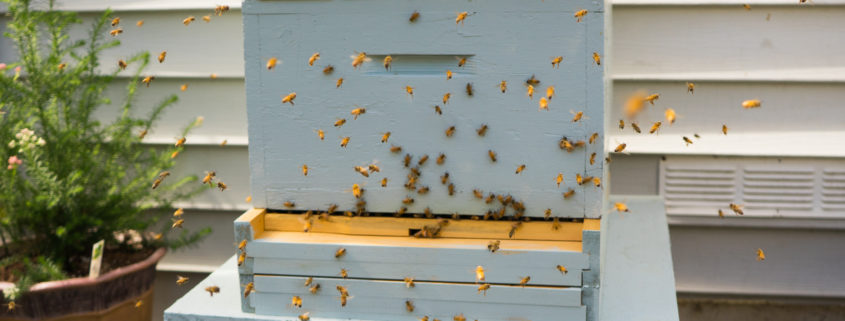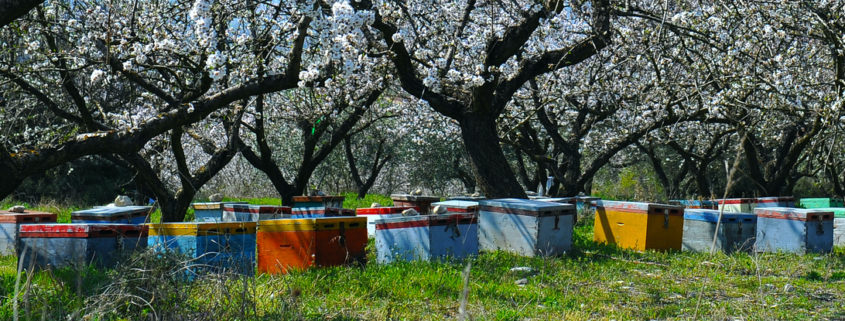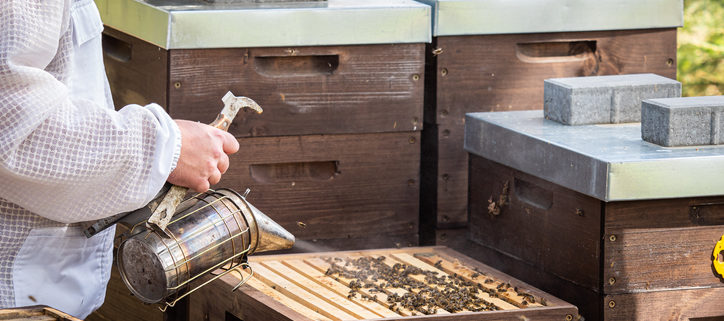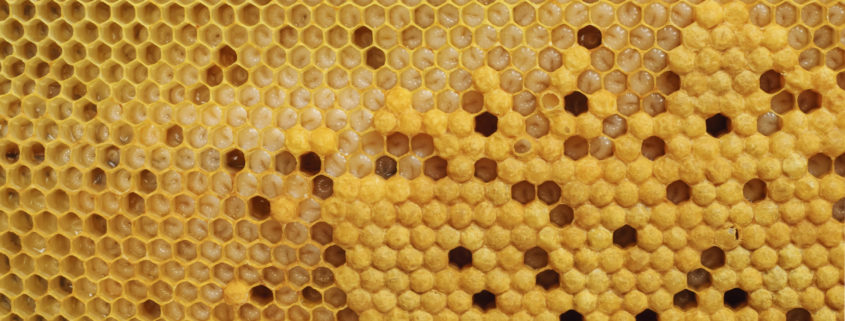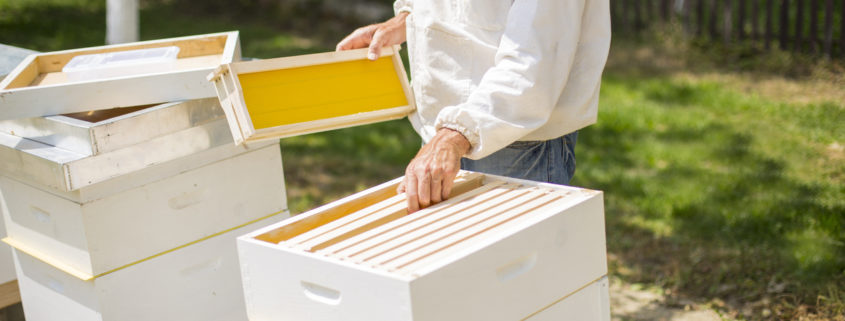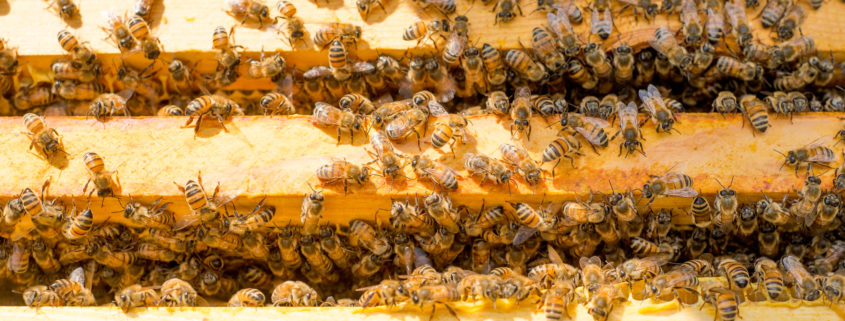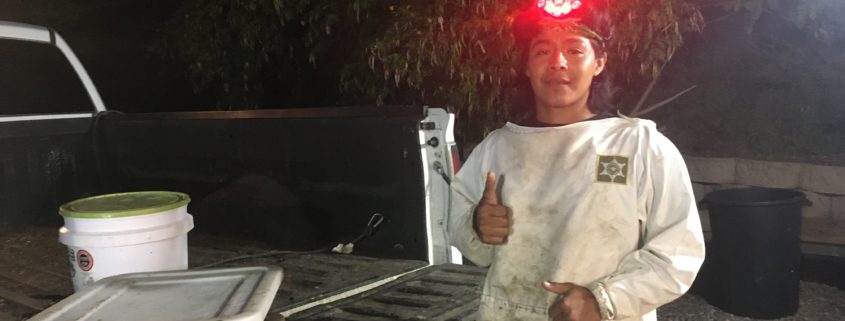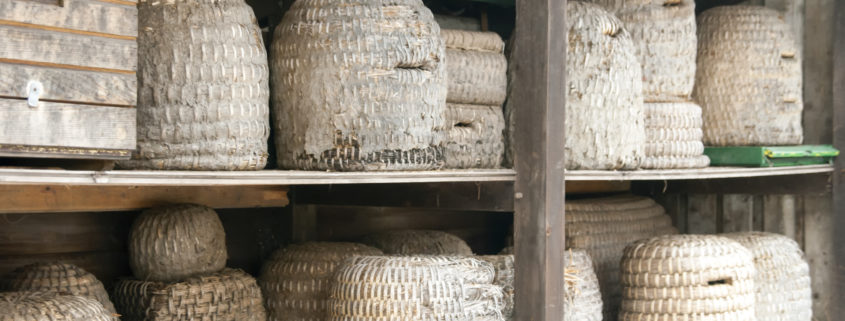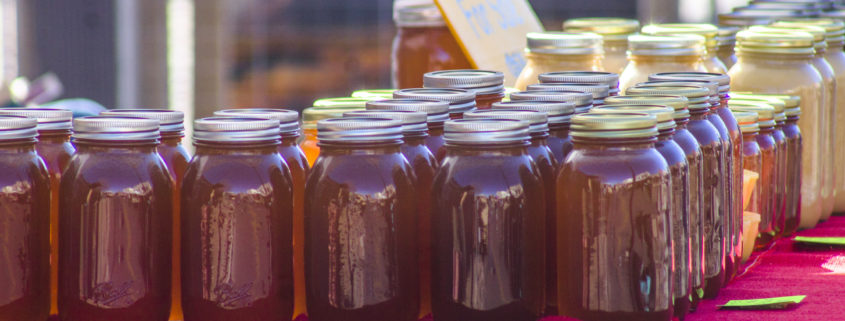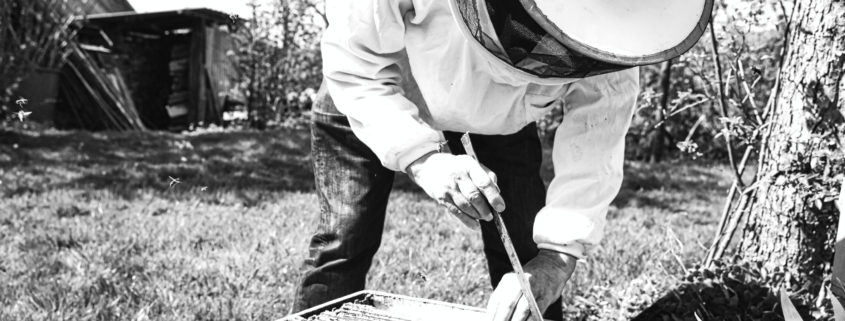How Far Should Beehives Be Placed from Your Home?
Whether you’re an avid beekeeper or a “newbee,” you’ve probably wondered where is the best spot to place your hive. If you’re planning to keep your beehive in your backyard and accessible from your home, there are definitely a few things you should consider. But just how close to your house can you put your hive?
The general rule is there should be a minimum of 4-feet behind and on either side of the hive, with a minimum of 25-feet of clearance at the entrance – but there’s really no cut-and-dry answer for this. In the end, most beekeepers – including us here at Wildflower Meadows – will say to use common sense and consider your personal situation. Each home, property, and neighborhood are unique, and each will offer its own hurdles. However, there are a few additional and critical aspects to consider when choosing where to place a beehive on your property.
Before you start searching for the perfect spot on your property, you should first make sure beekeeping is allowed where you live. Some cities and states may have zoning restrictions on beekeeping, or on the number of hives that are permitted on a property. Some homeowners’ associations and private neighborhoods may also have policies that pertain to beekeeping, so be sure to ask around before getting too far ahead in the process.
When choosing a hive site, it’s important to remember that while most honeybees are docile, some colonies can be more defensive than others. Even if you keep gentle bee stock, there are certain times of the year or situations where the temperament of the hive can be affected – adverse weather, excessive disturbances, or a pest infestation for example. Keeping the entrance of your hive away from high traffic areas of your yard, or too close to the entrances of your home is best to avoid annoyances or stings.
Even though you’re a fan of bees, your friends, family members, or neighbors may not be as keen. A curious child or pet that wanders too close to the hive could alert worker bees – a situation you’d likely prefer to avoid. To help keep the peace between your household and your beehive, it is best to keep the hive in an area away from children and high traffic areas of your outdoor space.
Foot traffic isn’t the only issue with residential beekeeping, vehicle traffic can pose problems to your colony too. Windshields are unfortunately a popular bee graveyard. While honeybees are known to fly miles away from their home to forage for nectar, they do need some space to reach a high altitude. Without any nearby obstacles, bees will generally require about 6 feet of linear space to gain 6 feet of altitude – similar to when a plane takes off on a runway.
Providing this amount of “runway” may not be ideal or available for you, so you might want to encourage your bees to gain altitude more rapidly by keeping your beehives surrounded by tall shrubs, fences or walls. This will force your bees to reach altitude more rapidly, keeping them away from the ground level right from the start. (Nevertheless, there are limitations to this strategy, and one must use common sense. For example, if your home is more than two stories tall and your beehive’s entrance is placed too close to your home, one of two things can happen. Your bees will either need to expend more energy to fly up and over your home, or the bees will avoid flying in that direction altogether, limiting their foraging options.) Of course, some beekeepers choose to place beehives on their rooftops, as it’s the easiest way to get bees flying at a higher altitude and away from human hazards.
Finally, no matter where you choose to place your hive, you will always also want to make sure that bees have access to a reliable and clean water source.

